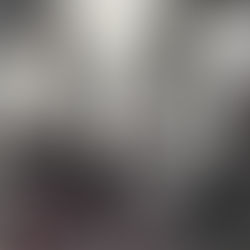Reynier Llanes

Written by Kristin T. Woodward.
Oxford America named Reynier Llanes among 100 Under 100: The New Superstars of Southern Art in 2012 and his exhibition record has grown in reputation and geography in the years since. Now represented by Robert Lange Studios in Charleston, South Carolina, his paintings reside in the permanent museum collections of the Denver Art Museum, Ogunquit Museum of American Art in Maine, Cornell Fine Arts Museum and Rollins College in Winter Park, Florida, Polk Museum of Art in Lakeland, Florida, Museum of Fine Arts in Little Rock, Arkansas, and Simeon B. Chapin Art Museum in Myrtle Beach, South Carolina, among others. His recent solo exhibitions have included foremost museums throughout the United States, such as the Gibbs Museum of Art in Charleston and the Butler Institute of American Art, in Youngstown, Ohio. Reynier’s paintings have also been featured in The Atlantic Magazine, The Business Journal, and La Maleta in Barcelona, Spain.

Magical realism envelopes Reynier’s fantastical large-scale paintings, sampling imagery from Santeria and Cuban folkloric traditions. Credence in ache, a sacred energy transmitted from the supernatural to mortal beings, resonates in semi-transparent figures merging into lush yellow grounds. At times the artist’s color palette remains saturated and unrestrained, while heavily floral works revel in candy-colored dappled light. Bleached white human silhouettes behave as lonely sentinels in fields of flowers, silently surveying their landscapes. Their translucence becomes ghostly against vivid flora and fauna. Bodies of water similarly feature prominently in Reynier’s works and function as spiritual points of origin in an expanded personal and mythical narrative. Farm animals manifest in several of his most recent canvases. White goats assume heroic and cosmic reverence in vivid detail, with titles attributing talismanic or zodiac symbolism. Reynier’s ethereal images appositely tap into our collective unconscious, and lull us into serene pastures.

Other references to Atlantis are conflicted, and speak to lost figures, and the hubris of nations. A trio of pigs set adrift on a small boat reoccurs in multiple works spanning years between 2020-2024, perhaps signaling prophecy and auspicious fairytales. The gestures and quick brushwork constructing the pinkish pigs imbues them with movement, and a fleshiness redolent of human skin. Containing irony in the solidity of the animal forms, the humans are rendered with veils of thinner oil glaze. The tactile language and physicality of the paint supports his lush emotive works, while shifts in viscosity place hierarchy on what is ‘real’. Accordingly, thick impasto passages offer haptic connections to sand and soil. Concrete forms are rendered in chiaroscuro, only to dissolve into splatters of wet paint. Many pieces have a distinctive buildup of paint mass in the center of the picture plane, allowing pigment to trail off along edges, emulating human peripheral vision.

Troy (Poem by Henrik Nordbrandt) (pictured above) , a 79 x 63 inches oil on canvas piece can be described as monumental in both physical scale and psychological stature. A glassy white figure stands on the precipice of a craggy cliff, contemplating outstretched waters. Bands of aqua and ultramarine within the watery space recall ocean maps with measured depths. The horizon remains beyond our sight. Transparency of the male physique suggests past memory, or reality shifting according to one's perspective. The solidity of the cliff, in contrast, feels alive with flecks of color embedded in dense ground. An archeological excavation of the paint seems to unravel hidden currents of existence. Reynier thus presents us with landscape as the only resilient and enduring lifeforce. Human presence becomes visibly frail and fleeting in comparison to the beach and relentless tides.

Henrik Nordbrandt’s poem Troy, the inspiration from which the painting borrows the title, begins “Each day I am someone different than the day before”. The precarious and vulnerable state of flux is deeply felt in Reynier’s empty human silhouettes. Their diaphanous state and anatomical detail transmit an impression of hollow perfection. Animated human shadows appear to have stepped out of fables and allegories to speak to the present existential crises in our hearts and minds. Within these liminal spaces, Reynier’s figures offer us palpable presence. The result contains a profound sense of familiarity with mythic identities and personification of spiritual longing. The artist becomes a technician of ecstasy, and picks up where mythology leaves off.





Artist website: https://reynierllanes.com
Instagram: https://www.instagram.com/reynierllanes
Facebook: https://www.facebook.com/reynier.llanes





































